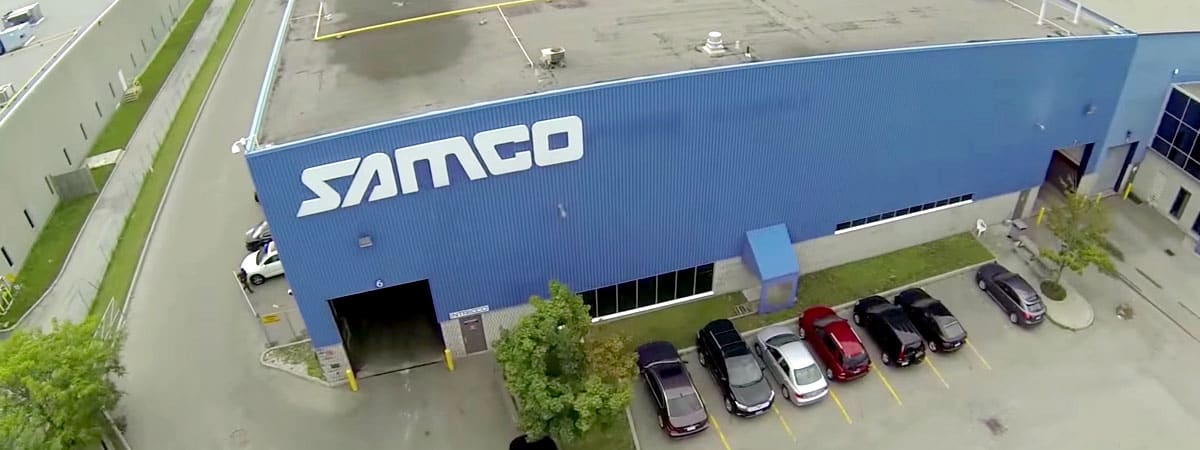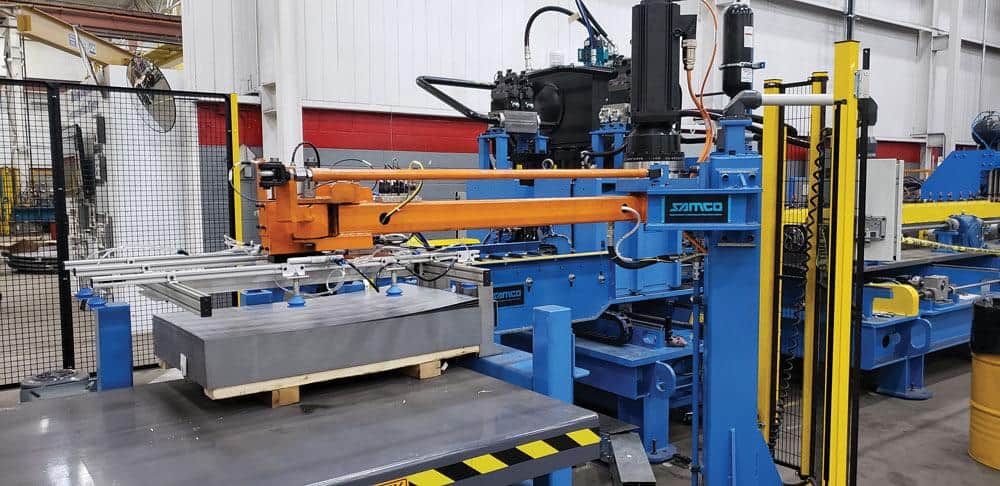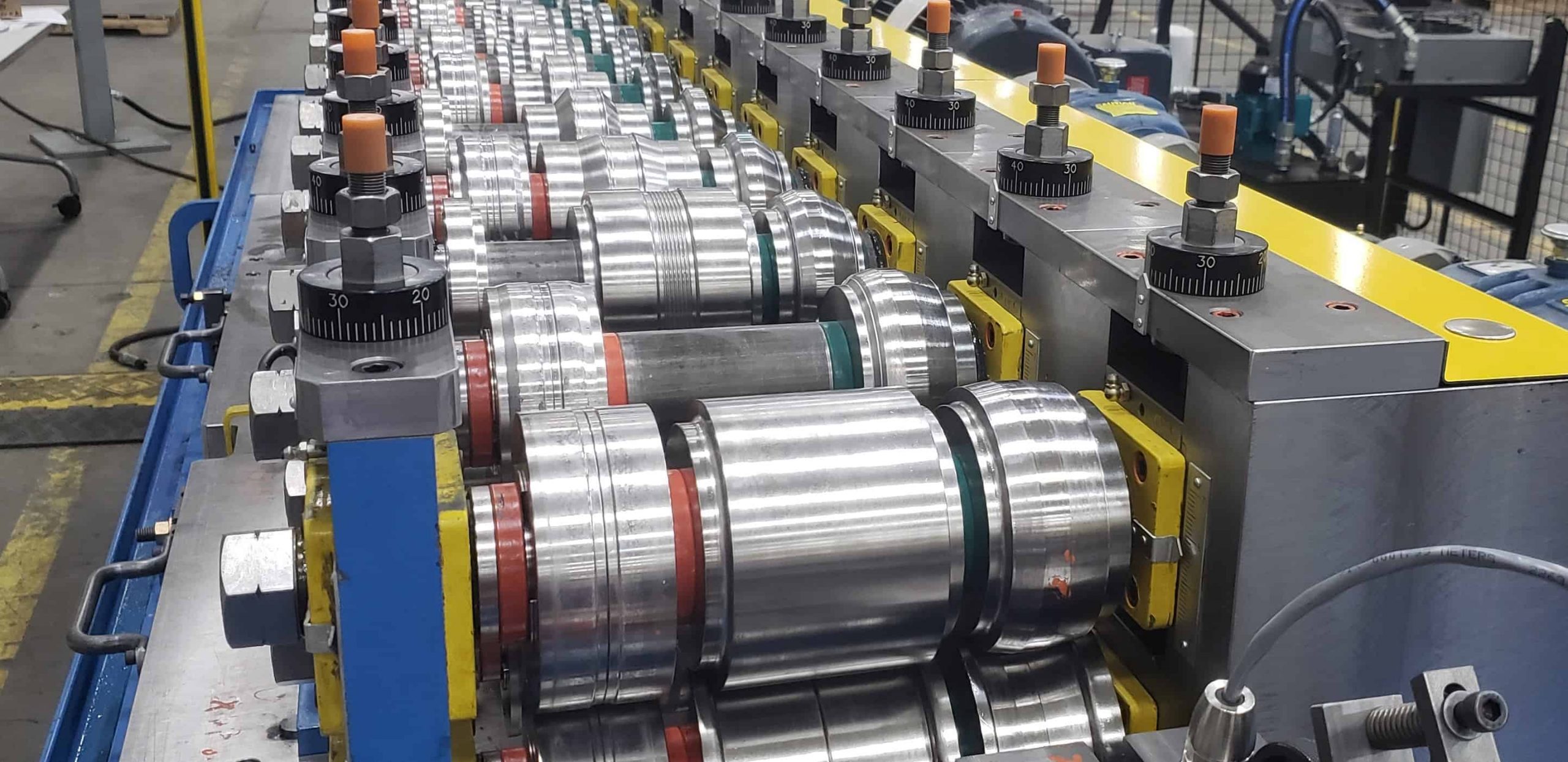
Meeting the Standard
Five must-have accessories for your next roll former
As a young boy in 1965 I visited a car dealership with my father. I was amazed by some of the incredible innovations that had been added to vehicles. For instance, an AM/FM radio, electrically powered windows, and an automatic transmission were available in the Ford Galaxy 500 soon to be delivered to our driveway. However, those features that impressed me so much then now are as common as tires and a steering wheel.
Similarly, several features of roll forming (and tube mill) equipment that used to be considered options are now standard features, and you should ensure that they are included in the next line you buy.
Roller-type Coolant System
If your roll former has a nozzle, wand, and piping system with a large recirculation tank for the roll coolant, your company may be using 1960s technology. A common complaint about this method is how messy the roll coolant is on equipment and, subsequently, on the floors.
If your part has no holes in it, you may find a trough of coolant inside the part right up to the cutoff operation, where it inconveniently dumps onto the floor. This not only makes recovering the spilled coolant difficult and expensive, it also makes your plant floor look like a mess and raises questions about your company’s commitment to protecting the environment.
A roller-type coolant system has the ability to meter out a programmable amount of lubricant to only the coil strip as it is entering the mill. This system can be fine-tuned to accommodate the right amount of lubricity for the substrate, allowing the strip itself to carry the necessary liquid downstream in tiny droplets.
Plug-and-Play Line Electrics
Electrical connections for most equipment can be snapped together with large industrial plugs and locking receptacles the day the line arrives on your shop floor (see Figure 1). It is no longer necessary to label each wire carefully during the testing phase at the build facility and hope that each wire finds its way back to the same terminal during start-up and commissioning at your plant.
Gone are the days of incurring a $6,000 to $12,000 electrical bill for the reconnection of all the wires. A plug labeled A1, a large, military-quality electrical connection, snaps into the receptacle labeled in bright yellow letters as A1. The process takes about one minute and is cost-effective, especially if you ever need to relocate your equipment.
Make sure to read your quotation proposal carefully. If this plug-and-play capability is not listed, then it probably won’t be included on your new equipment. If you don’t see it, ask for it.
Reverse-Engraved Operator Panel Screen
The secret to any quality improvement is in the details. Like any piece of new equipment, a roll forming line looks great when it first comes off the truck. The paint glistens; the mill base is free of galvanizing flakes; and the operator control panel displays all the important line controls about each Allen-Bradley button and switch. Words like manual, auto, hydraulic press fire, hydraulic power pack on, and supervisor lockout key are clearly visible for each corresponding button.
There is just one big problem: The white button labels were silk-screened with paint onto black plastic. The dirt and grime of a steel processing plant, along with the abrasive fabric of the operator’s work gloves,systematically and literally wear off these words, leaving a button with no title above it.
Which button controls the press? Where is the safety override button? This is not something you want a new line operator wondering.
Many equipment suppliers offer reverse-engraved black control panels on which important labels have been carved permanently into the bottom underside of the black panel and painted underneath with white paint. This engraving method leaves a clear, smooth, glasslike surface on the top of the panel where the operator can read the button labels (see Figure 2).
Quick-release Jog-and-Lift Rafting
Most companies have taken advantage of the benefits of using a roll former or tube mill with quick-change rafting. The tops of the roll former are lifted off and exchanged with a second set of tops, allowing the mill to go from roll set A to roll set B without incurring downtime for a manual roll changeover, which could be half a day.
On old roll forming mills, conventional rafted cassettes have to be disconnected physically, and the upper and lower universal couplings that extend from each gearbox (permanently mounted on the mill bed) to the spline on the end of each upper and lower shaft on the mill have to be removed. On a 16-station roll former, this means that the operator must disconnect 32 couplings, exchange the rafted plates, and then reconnect 32 couplings to the new rafted top. This takes a lot of the operator’s time and energy, and many complain of lower back pain after completing such an exercise.
One way to simplify this task is with jog-and-lift, or no-touch, rafting technology that doesn’t require tools,manual disconnection and reconnection, and it reduces downtime (see Figure 3). With the newer systems, the operator holds the electrical jog pendant in hand, jogs the mill a few inches, and watches the quickrelease connector until it is in the 12 o’clock or north/south position. The rafted top A is now ready to be lifted straight up by an overhead crane or forklift and exchanged for rafted top B, which will fall into place in the same position.
Entry Guide Digital Readouts
One of the most convenient additions to a roll forming line is an entry guide with individual digital readouts for the inboard and outboard sides of the strip. By setting the inboard side of the entry guide to a predetermined value and doing the same for the outboard side, the operator can reduce variations in the setup and thus improve product quality.
With this feature, operators no longer just place the strip into the mill and close the entry guide against the coil’s edges. Instead, they can select the “sweet spot” for the strip alignment in the roll tooling, producing a part with a repeatable quality rather than spending precious hours eliminating problems and scrap caused by an improper setup.
Don’t get stuck buying 1960s technology on a new roll forming or tube mill line. Make sure to look over your roll former’s specifications, and then demand that these features be included as standard without your having to pay a premium price.


